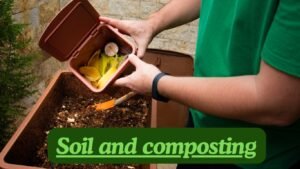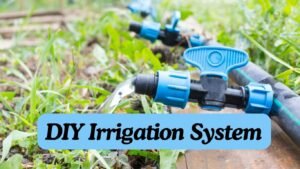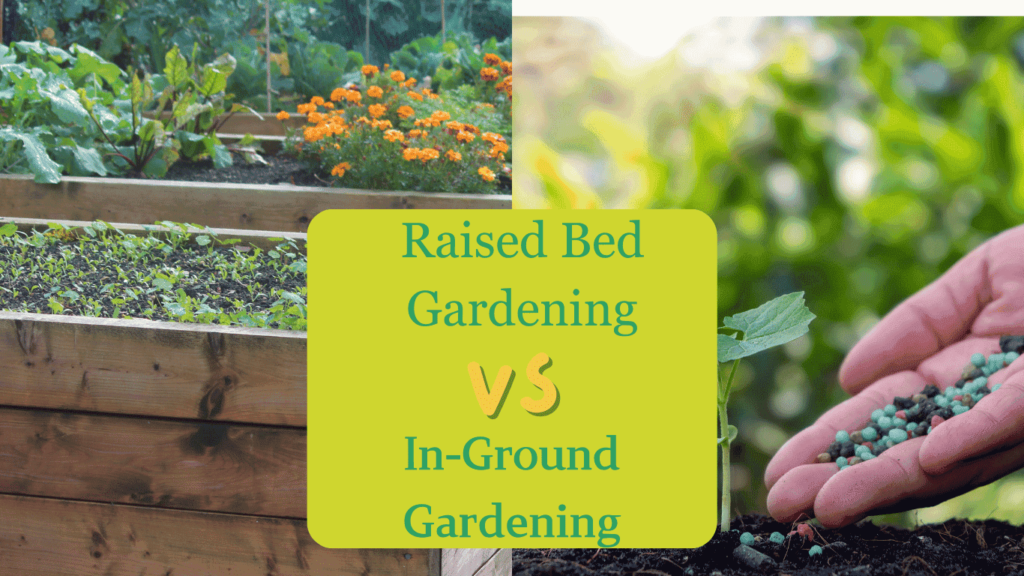A raised bed garden is one of the best ways to do home gardening or even build a large garden. Especially for beginner and intermediate gardeners and also those who have lower back pain issues.
When you have a raised bed garden, it’s in your hands to improve the soil quality and do better drainage. Plus, you can access it pretty easily without bending or kneeling. And most importantly, you can extend the growing season because they warm up faster in spring.
However, in this article, I will teach you how to build a raised garden bed on a budget. We’ll use cheap and free stuff like recycled material like old wood, pallets, etc. Even if you have to buy it from outside, it will still be a cheaper way to build a raised bed.
Plus, we will also explore low-cost soil amendments like compost from your own homestead.
Why should you consider having a raised bed garden?
You can consider having a raised bed garden because you can do gardening in a small space, which is better than in-ground gardening.
They are ideal for small spaces and for those who have problems in their back or those who want to maximize gardening.
Also read: Raised Bed Gardening vs. In-Ground Gardening: Which is Better?
How to plan your raised bed garden

When you are planning to have a raised bed garden, the first step is to find a location for a garden where your vegetables, herbs, or fruits can thrive.
Choose the right location for your raised bed garden
First of all, you have to choose a good location for your raised bed. It needs to be getting at least 6 to 8 hours of direct sunlight because it is the basic requirement for most vegetables and herbs.
Moreover, you want to look up water sources nearby for more convenience. Besides this, you can also use a water can to provide water to your plants.
Also read: How to Choose the Best Location for Your Garden
Choose the right size and shape
If you have got a small garden or you are doing urban gardening, I’d suggest you go with a 4 to 6 feet wider bed. This will allow you to easily reach the center without stepping onto the soil. That’s for all types of gardens.
If you are specifically designing a bed for a vegetable garden, I would suggest you build a raised bed around 8 to 12 feet long. This would provide you ample room to grow a variety of vegetables.
For vegetables, you can have beds that are around 8 to 12 inches deeper. It’s a good choice for most Vegetables.
Also read: How to Start a Vegetable Garden: A Beginner’s Guide
How many raised beds should you build?
How many beds you should have totally depends on the space available in your backyard or on your balcony. I currently have one. However, the typical backyard can have 3 to 5 beds.
I have a smaller balcony where I have one compact bed 3×4 feet in size. You can also have the same or 4×4 feet in size. Again, I would say it totally depends on your space.
Affordable materials for building raised beds
When you are building a raised bed on a budget, it is the most important thing to find cheap materials.
So, I have suggested some materials that you can find on websites like Craigslist, Facebook marketplace, local salvage yards, etc. All these materials are available on the website. Now let’s know what materials are needed.
Wood
It is the first thing that you must have for building a raised bed. You can look for untreated pine or cedar because they are affordable and available at most hardware stores and lumber yards.
For more affordability, you can also look for reclaimed wood, like old pallets or fencing. Sometimes, you can also get them for free, but they are cheaper even if you have to pay.
Again, I would say the same as I said before: you can find these things on Facebook Marketplace and Craigslist websites.
Cinder Blocks
Cinder blocks are also durable and inexpensive. That’s why they are a good choice for the raised bed. You can find them at home improvement stores or at local masonry suppliers.
Plus, they are very easy to stack and assemble. You don’t even need any special tools and skill requirements.
Bricks or Stones
You can also use bricks and stone to give a lovely aesthetic look to your raised bed. However, you first have to find reclaimed bricks and stone for that.
You can check any construction site, demolition project, or antique store for an affordable source of reclaimed masonry material.
Recycled or Repurposed materials
You can also get creative using upcycled items like old bathtubs, sleepers, metal livestock troughs, or even tires when making a bed. This type of repurposed container is an excellent budget-friendly option.
DIY kits
You can also find a pre-made raised bed garden kit for beginner gardeners. It is available at many hardware stores and online retailers at an affordable price.
These kits typically include the wood components and instructions so that you can easily assemble them at home without any professional help.
Step-by-step guide: Building a raised bed garden
Here is the step-by-step process to build a raised bed for the garden:
Gather your material
You will need some tools, like a saw, a drill, a screwdriver, a hammer, and most importantly, a measuring tape.
After that, you will want to look for construction materials. It can be untreated wood (cedar or redwood work very well). Besides this, you want to have a screw, nails, etc.
It is also good if you have landscape fabric, cardboard, compost, or garden soil available right now.
Prepare the ground
After gathering some important materials, you would like to prepare the ground. First of all, you have to choose an area that gets plenty of light because vegetables need at least 6 to 8 hours of direct sunlight.
After that, you want to clear that spot if there is any weed or grass. Lastly, weed barriers like cardboard or landscape fabric should be considered to prevent future growth.
Assemble the structure
You first have to measure and cut your wood pieces to the desired size, depending on how large the garden bed you want. Then, start constructing the side of the bed.
You can screw corners with screws or nails. Plus, you can also use pots for stability because I do that.
Lining the bed
To line the bed, you can use landscape fabric or cardboard to prevent weeds from entering your garden because they won’t let your plant grow as it should. Weeds can eat all the nutrients present in the soil.
Fill up your bed with soil
Once you’ve built a bed like its boundaries from all sides, now it’s time to fill it up with soil.
You can start with a layer of compost or other organic material on the bottom. On top of that, you can get a high-quality potting mix or gardening soil.
And after that, you have to blend more compost or edge manure to enrich your soil, which is good for vegetables.
Plant and provide water
Now, you have made a bed filled with good soil. Now, it’s time to provide water thoroughly to help the soil settle.
After that, you can plant your desired vegetables, herbs, flowers, or small fruits like strawberries.
Soil and composting on Budget
Now you know how to build a raised bed garden. However, soil is very important. So now, let’s know how to build it on a budget.

Mixing your own soil
One of the best ways to save money is to source your own soil components rather than buying pre-mixed potting soil. For example, you can find topsoil at a very cheap price from a local landscape supplier. Or you can also ask your neighbor.
You can also start your own compost pile. Plus, you can also see if you can get free or low-cost compost from your municipality.
You can also look for perlite or vermiculite soil amendments. It will help in drainage and aeration. You can often find them discounted at garden stores.
Also read: How to prepare soil for vegetables flowers & fruits gardening
Making compost pile on your own
Now, you know a lot about mixing your own soil. Now it’s time to understand how you can make your own compost pile to enrich your soil on a budget.
So what material will you need?
The basic material is brown matter, which means dry leaves, shredded paper, straw, etc.
The second is green matter, which means grass clippings, vegetables, fruit scraps, and coffee grounds.
Finally, you will like to layer these brown and green matter to keep the pile moisturized, which results in nutrient-dense compost.
Note: You don’t need any fancy compost bin to waste money. I have never seen my grandfather use a fancy bin for composting, but I have seen him a lot of times… Keep these dry leaves, shredding, paper, vegetables, and fruit scrap in a simple enclosed area.
Because it really works well. If you’re building a small bed garden for yourself to grow food at home… You don’t need a compost bin when you have the free option available. Just don’t let air touch your green and brown matter mix material for better compost.
How you can get and use free organic material
For a compost pile, you can also look around your homestead for free organic matter to mix into your waste bed.
You would like to look for grass clippings, which are an excellent source of nitrogen to feed your plant. Besides, you would like to look for fallen leaves that are usually dry because they are an excellent source of carbon for your compost.
And lastly, vegetable peels, eggshells, and coffee grounds can all make a great soil amendment.
I just meant to say you have to be a little creative to maximize the use of materials you already have available in your kitchen.
How to maintain your bed garden on a budget?
Now you know how to build a cheap garden bed, what the best soil and compost are, and how you can prepare it at home. Now it’s time to know how you can maintain your bed.
There are three steps to maintain your raised bed garden, including soil maintenance, irrigation systems, and mulching. Now, let’s understand them one by one.
Affordable Soil Maintenance
The first is soil rotation. It is the best way to keep your soil nutrients rich without breaking the bank or wasting money on it.
You can simply plant different types of vegetables in each bed every year. It will help to prevent soil depletion. Besides this, you can also add homemade compost, as we have discussed before. It is a cost-effective way to replenish nutrients.
Lastly, you would like to consider interplanting nitrogen-flexing plants like peas, beans, or clover to naturally enrich the soil.
DIY Irrigation System

Soaker hoses are a great budget-friendly option that you can go with. They slowly water directly to the root, which minimizes water waste and also saves you time.
You can also use plastic bottles to make a drip irrigation system. You will have to poke small holes in the bottles, bury them next to your plants, and let the water slowly drip out. It’s a very nice way.
You can choose any of these options: soaker hoses or drip irrigation. Both are good. Both conserve water and ensure your plants get moisturized.
Mulching to retain moisture
For moisture, you can apply a 2 to 4-inch layer of organic mulch, such as wood chips, straw, or leaves. They will help to lock soil moisture and reduce frequency, plus you won’t have to water again and again.
It will also suppress weed growth, which will save you time and effort. Moreover, you can also use free mulch sources or low-cost mulching material from your own property or local sources.
Common mistakes to Avoid that people make while building a raised bed
Here are some common mistakes that people make, and you need to avoid them. It will save your effort and your time. Thus, by doing so, you are not compromising on quality. The quality will still remain the same.
Overloading gardening Beds
The first mistake that people make while building a raised bed is overloading beds, for which they use premium soil, which is totally unnecessary.
I mean, good quality garden soil mixed with some compost will absolutely work fine, and you can even make compost at your own home, as we have discussed above.
So, you want to avoid over-amending the soil with too many additives or treatments. It is just a waste of money.
Using treated wood or nom food safe materials
Of course, you have to use wood material. But always remember that you stick to untreated, food-grade material like cedar, redwood, or recycled plastic for the bed frames.
Because sometimes treated wood can contain harmful chemicals that can get mixed with the soil. That’s why you have to avoid materials like pressure-treated lumber, railroad tires, or old, painted wood, etc.
Because chances are high, they may contain some toxins which aren’t good for soil.
Building beds that are too deep or shallow
Well, the ideal depth for most vegetable and herb gardens is 8 to 12 inches. If you are making a deeper bed, then it is just a waste of soil, etc.
You won’t get anything special from that. It won’t provide any aquatint rooting space. Plus, beds that are too deep are sometimes difficult to maintain.
So, you want to pay attention to the mature root depth of the plant you want to grow.
Other common mistakes that you have to avoid
Don’t place your bed where it can’t get proper sunlight because vegetables and herbs need it the most. Plus, the area shouldn’t be with poor drainage.
And you have to properly prepare the soil before building the bed. You have to decide what you want to grow and what type of soil you need.
Another mistake that I have noticed is that many people neglect to leave enough space between beds. And sometimes they even walk away from it, which is really bad. But it happens with just a few people who don’t know about it. However, it is a bad thing to do so. You want to avoid it.
Conclusion
It is very easy to build a cheap raised bed garden. You just have to remember some important things, such as choosing an ideal location where your plant can get at least 6 to 8 hours of direct sunlight, which is especially important for vegetables.
You want to have easy access to water sources. Besides this, you can aim to rent beds that are usually 8 to 12 feet long or 4 to 6 feet wide. Plus, the depth should be around 8 to 12 inches deeper to accommodate the root system. It’s suitable for most vegetables that we usually have in our kitchen.
Depending on the size of your space, whether it’s a balcony or backyard, you can build a raised bed. However, make sure they aren’t too wide, like they’re occupying too much space, and you have to step up on them because it’s not good for the soil.

